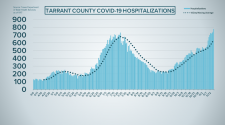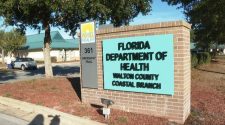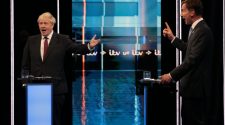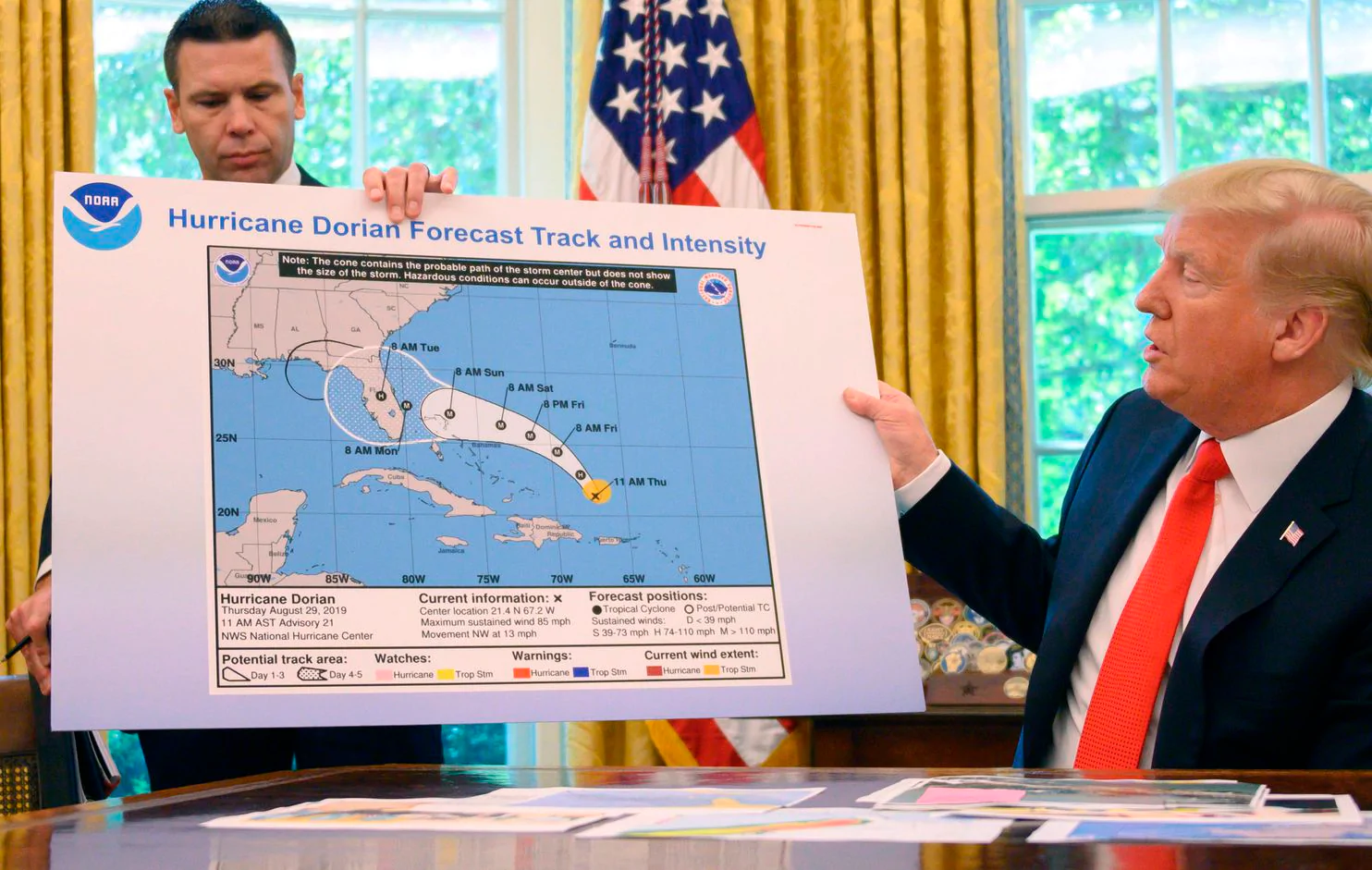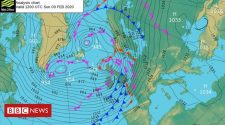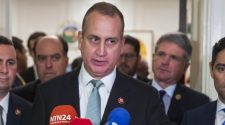The Federal agency that oversees the National Weather Service has sided with President Trump over its own scientists in the ongoing controversy over whether or not Alabama was at risk of a direct hit from Hurricane Dorian.
In a statement released Friday afternoon, the National Oceanic and Atmospheric Administration (NOAA) stated Alabama was in fact threatened by the storm at the time President Trump tweeted Alabama would “most likely be hit (much) harder than anticipated.”
Referencing archived hurricane advisories, the NOAA statement said that information provided to President Trump and the public between August 28 and Monday, September 2, “demonstrated that tropical-storm-force winds from Hurricane Dorian could impact Alabama.”
[President Trump showed a doctored hurricane chart. Was it to cover up for ‘Alabama’ Twitter flub?]
In an unusual move, the statement also admonished the National Weather Service office in Birmingham, Alabama, which released a tweet contradicting President Trump’s claim, that stated: “Alabama will NOT see any impacts from #Dorian.”
The NOAA statement said: “The Birmingham National Weather Service’s Sunday morning tweet spoke in absolute terms that were inconsistent with probabilities from the best forecast products available at the time.”

Released six days after Trump’s first tweet on the matter, the NOAA statement was unsigned, neither from the acting head of the agency nor or any particular spokesperson. It also came a day after the homeland security and counterterrorism advisor released a statement justifying Trump’s claims of the Alabama threat.
The NOAA statement on Friday makes no reference to the fact that when Trump tweeted Alabama was at risk it was not in the National Hurricane Center’s “cone of uncertainty,” which is the zone in which forecasters determine the storm is most likely to track. Alabama had also not appeared in the cone in days prior and no Hurricane Center text product ever mentioned the state.
Trump’s tweet that Alabama would be impacted by the storm gained national spotlight on Wednesday when he presented a modified version of the forecast cone on August 29, extended into Alabama — hand-drawn using a Sharpie. The crudely altered map appeared to represent an effort to retroactively justify the original Alabama tweet.

Comparison between the actual Cone of Uncertainty graphic on August 29 and the one shown in the White House video on September 4. (NOAA/White House)
The doctored map went viral, becoming a source of ridicule among many political pundits and late-night talk show hosts, who accused the President of dishonesty.
[‘Mr. President, you’re going to weather jail’: Trump roasted for altered Hurricane Dorian map]
Altering official government weather forecasts is actually illegal. Per 18 U.S. Code 2074, which addresses false weather reports: “Whoever knowingly issues or publishes any counterfeit weather forecast or warning of weather conditions falsely representing such forecast or warning to have been issued or published by the Weather Bureau, United States Signal Service, or other branch of the Government service, shall be fined under this title or imprisoned not more than ninety days, or both.” (The Weather Service is the modern version of the Weather Bureau.)
In the face of criticism about the modified map, Trump fired off additional tweets on Wednesday and Thursday, insisting Alabama was at risk all along, including presenting a map from August 29 depicting a small possibility that Alabama would see tropical storm force winds.
The map indicated only a five to 20 percent chance of such conditions in parts of Alabama beginning on Monday. However, by the time of President Trump’s tweet on Sept. 1, those odds were down to a 5 percent chance of tropical storm conditions in a sliver of extreme southeastern Alabama.
Ten days ago, computer model predictions did present a scenario in which Dorian would strike Florida, enter the Gulf of Mexico and potentially impact Alabama. However, by Friday, Aug. 29, when the president was briefed by acting NOAA administrator Neil Jacobs, that scenario had become highly unlikely. By Sunday morning, when Trump tweeted about the Alabama threat, no credible computer model showed any risk to the state.
The Weather Service’s mission is to protect life and property. By releasing the statement admonishing the agency for an accurate forecast, NOAA may be seen as putting politics before facts. This could undermine forecasters’ ability to carry out their mission to the point where people may come to see its weather forecasts as political and untrustworthy.
Many meteorologists, recognizing Alabama was at no risk, expressed their ire on Twitter, stating Trump should have instead focused on communicating Dorian’s hazards to the Southeast coast, and dispensed with his preoccupation with Alabama.
James Franklin, the former chief of a prediction unit at the National Hurricane Center, expressed support for the Birmingham Weather Service office which NOAA admonished.
“I thought Birmingham’s statement Sunday morning that Alabama would see no impacts from Dorian was spot-on and an appropriate response to the President’s misleading tweet that morning,” he wrote in an email. “[The Hurricane Center’s] wind-speed-probability product serves as guidance to forecasters, and it showed only a very small likelihood of tropical-storm-force winds in the state, and essentially zero chance of hurricane-force winds.”
He stated: “I am very surprised that NOAA’s statement today seems to not recognize the value its forecasters add every day to NWS products and services.”

